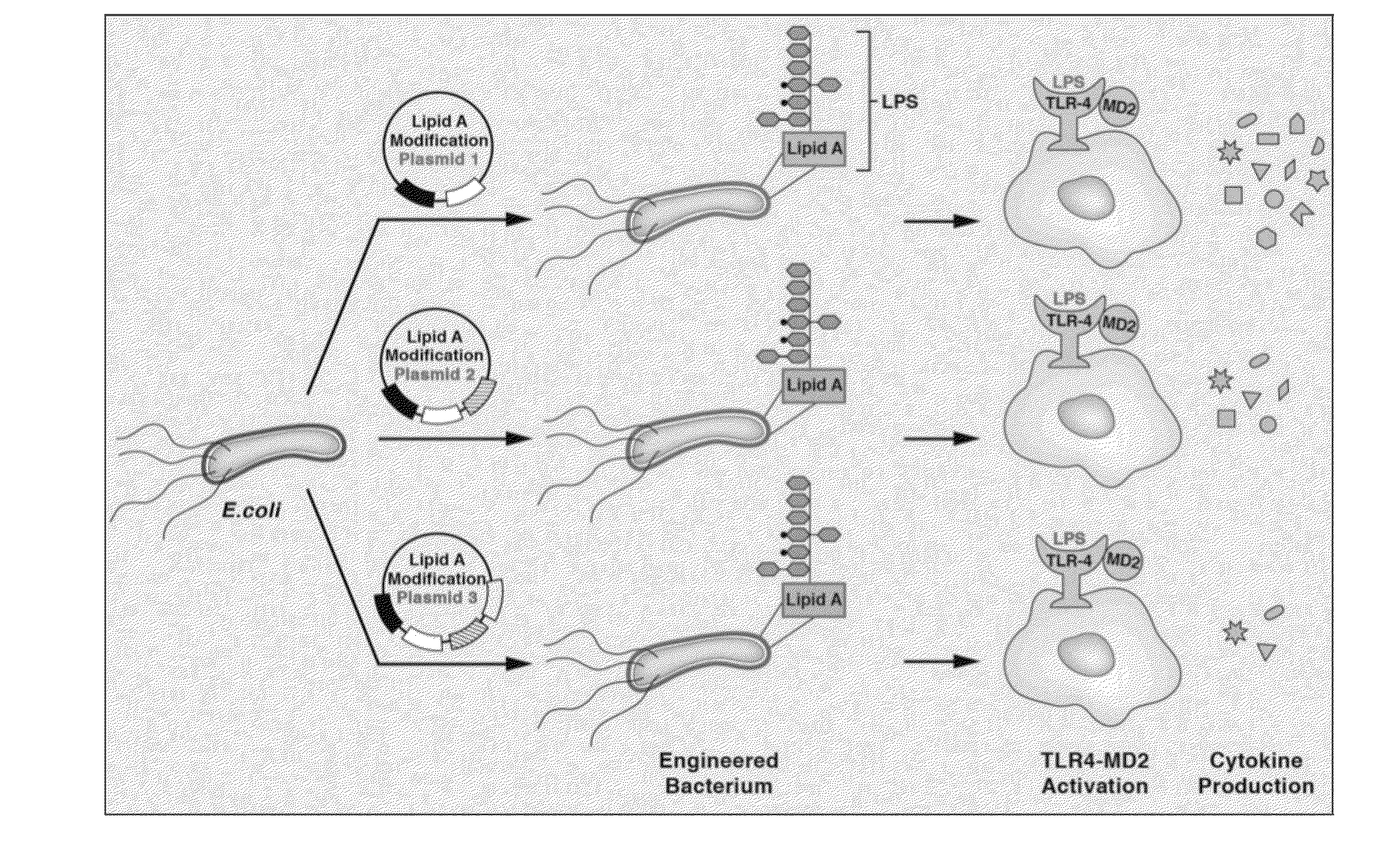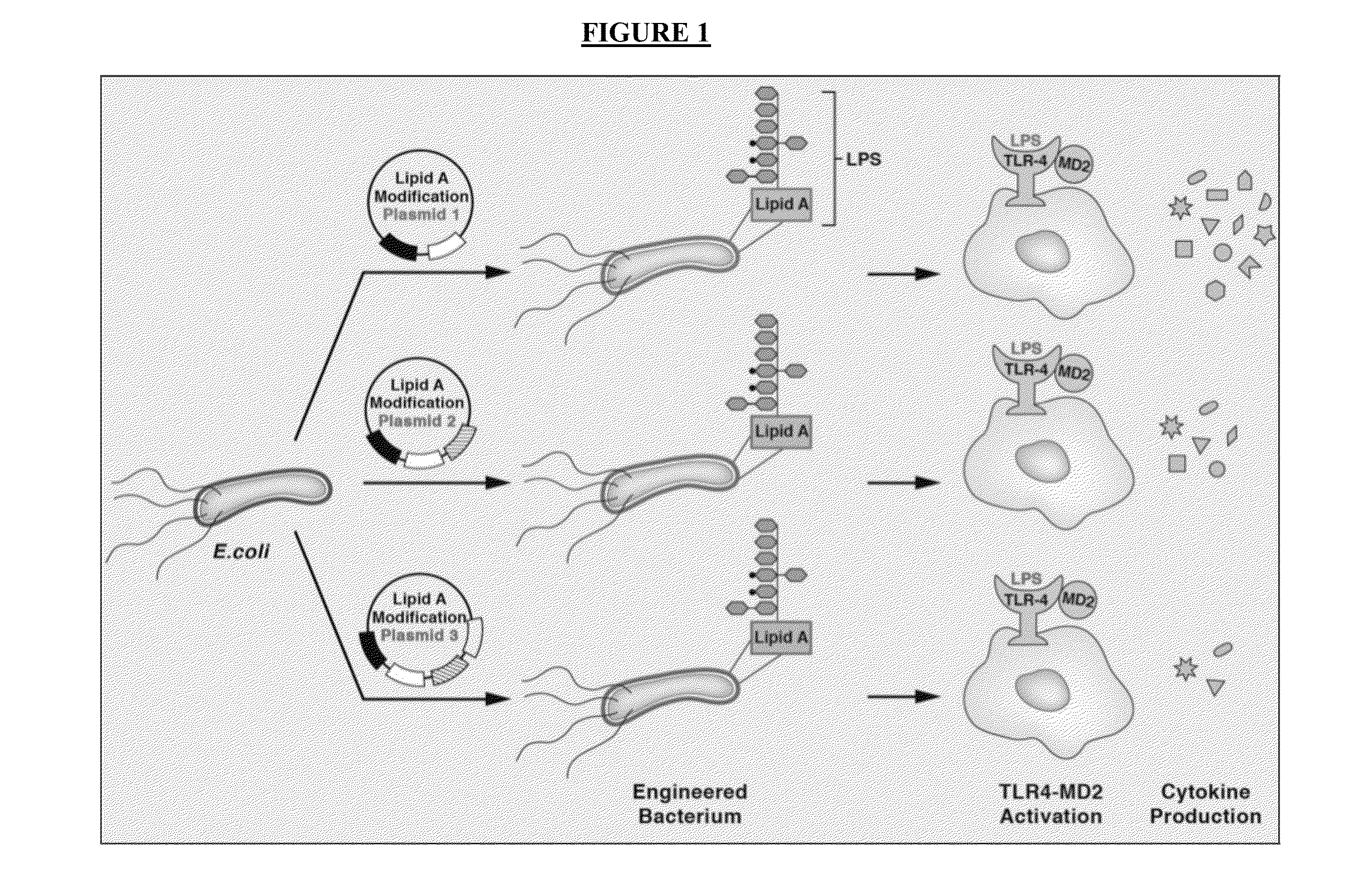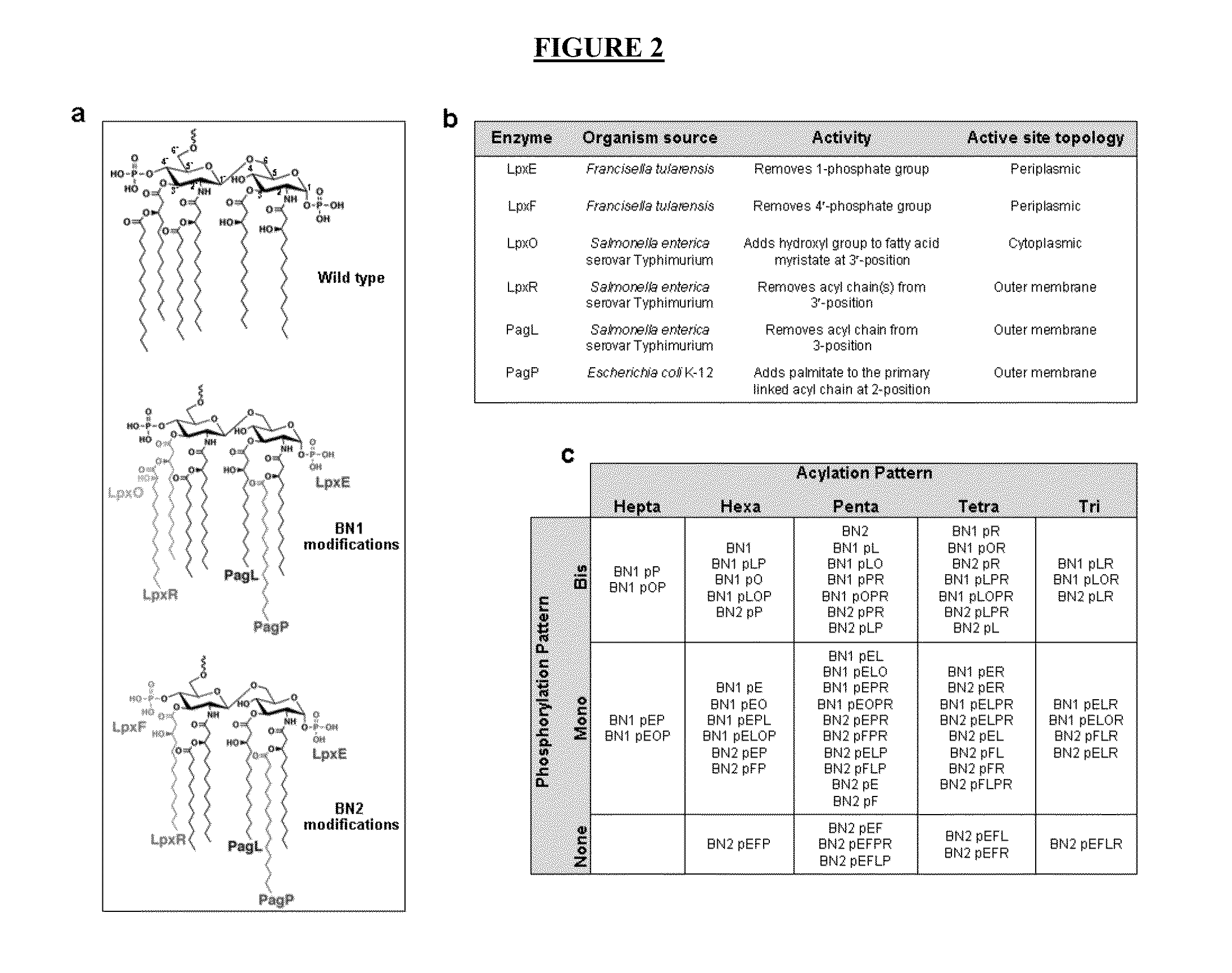Synthetic lipid biology for combinatorial engineering of endotoxin
a technology of synthetic lipids and endotoxin, applied in the field of synthetic lipid biology for combinatorial engineering of endotoxin, can solve the problems of no strains have been generated using a complex combinatorial approach, and its toxicity is a major concern
- Summary
- Abstract
- Description
- Claims
- Application Information
AI Technical Summary
Benefits of technology
Problems solved by technology
Method used
Image
Examples
Embodiment Construction
[0052]Construction of Mutant Strains
[0053]Table 2 shows the bacterial strains and plasmids used in this study. All gene deletions were performed by P1 vir phage transduction using Keio collection mutants as donors, as previously described (Herrera et al., 2010, Baba et al., 2006). Antibiotic cassettes were removed as described previously (Datsenko et al, 2000). BN1 was generated from BN0, an lpxT and eptA double mutant. The LpxT enzyme functions to add a third phosphate to lipid A, and when mutated the lipid A should be bis-phosphorylated. However, LpxT inhibition activates EptA, which adds a phosphoethanolamine to the 1-position of lipid A. Mutation of lpxT and eptA activates PagP to palmitoylate the 2-acyl chain of lipid A, so the pagP gene was also deleted. PagP was used in plasmids to generate the library of the present disclosure, so its mutation prevented confounding modifications to the lipid A. Deletion of all three genes resulted in a strain that makes >95% of the prototypi...
PUM
| Property | Measurement | Unit |
|---|---|---|
| bioactive | aaaaa | aaaaa |
| color | aaaaa | aaaaa |
| hydrophobicity | aaaaa | aaaaa |
Abstract
Description
Claims
Application Information
 Login to View More
Login to View More - R&D
- Intellectual Property
- Life Sciences
- Materials
- Tech Scout
- Unparalleled Data Quality
- Higher Quality Content
- 60% Fewer Hallucinations
Browse by: Latest US Patents, China's latest patents, Technical Efficacy Thesaurus, Application Domain, Technology Topic, Popular Technical Reports.
© 2025 PatSnap. All rights reserved.Legal|Privacy policy|Modern Slavery Act Transparency Statement|Sitemap|About US| Contact US: help@patsnap.com



